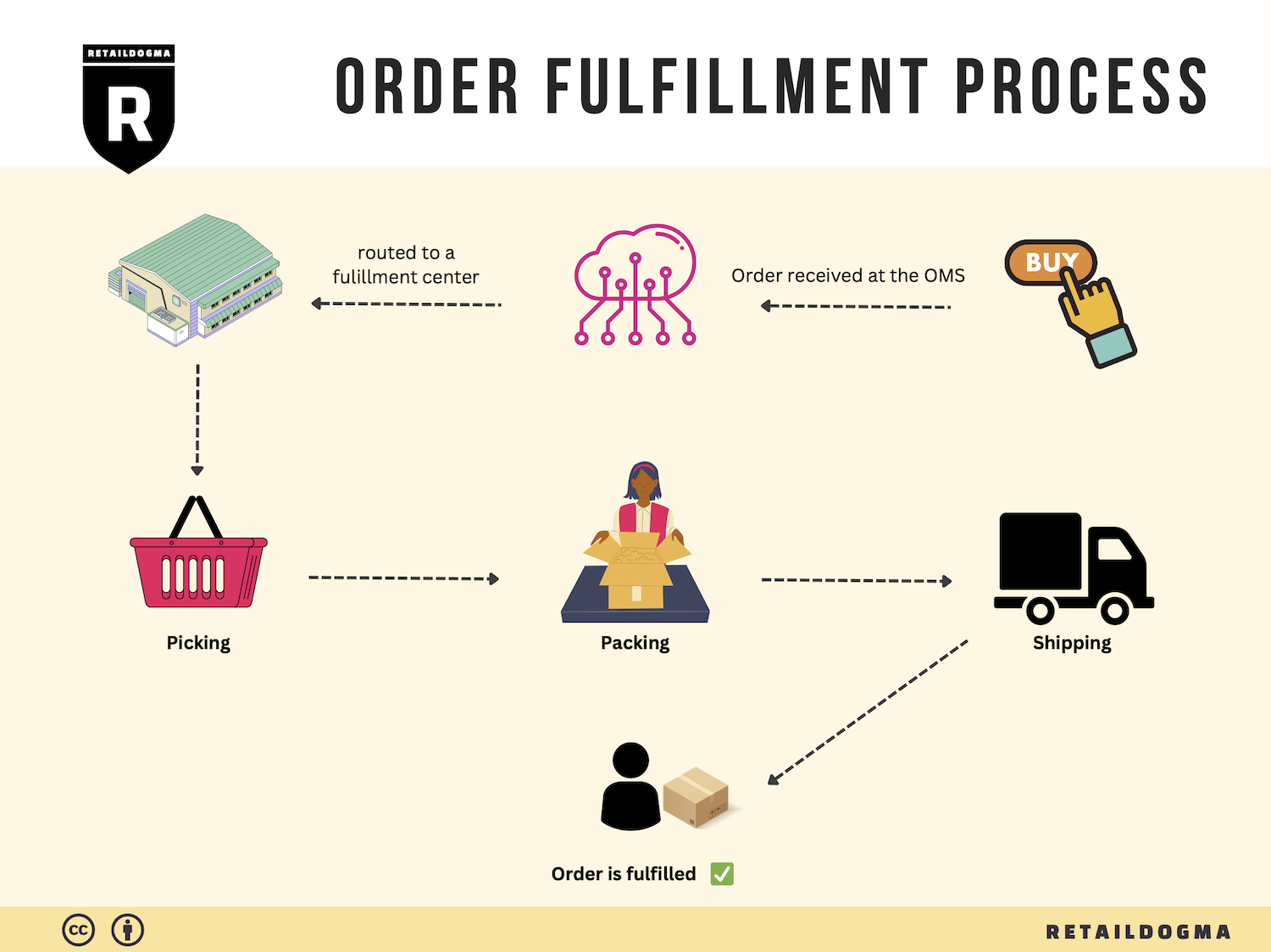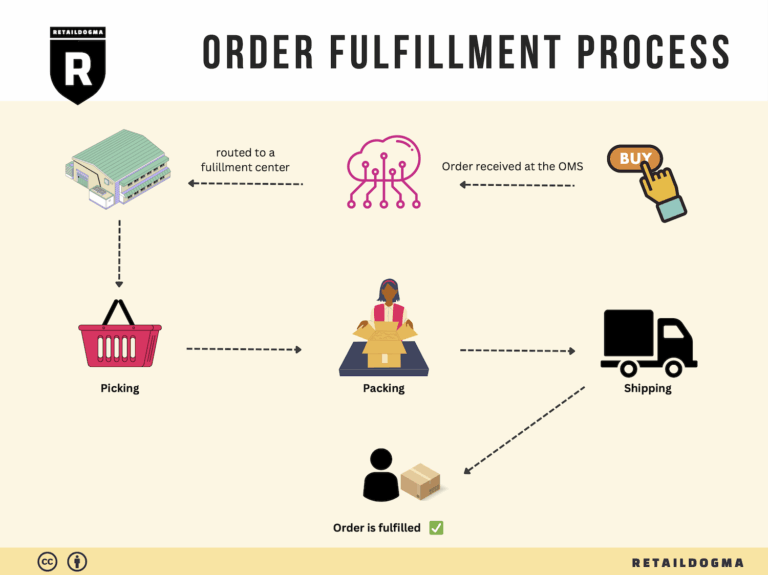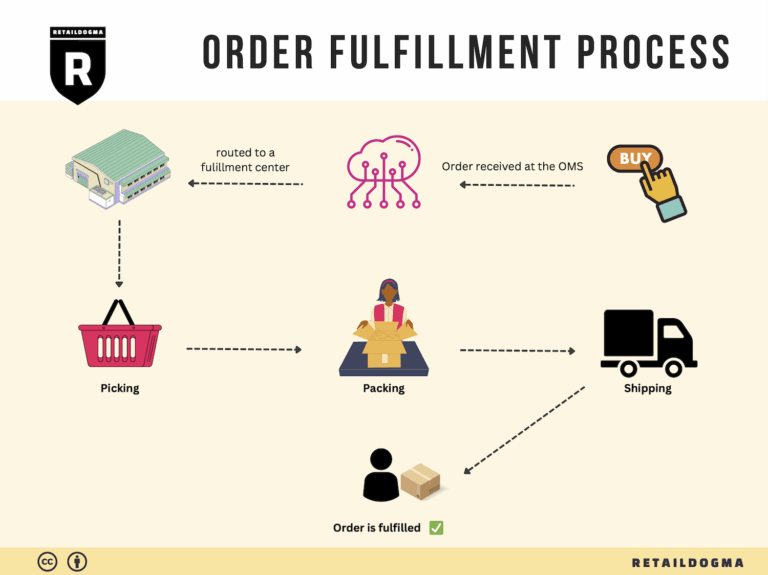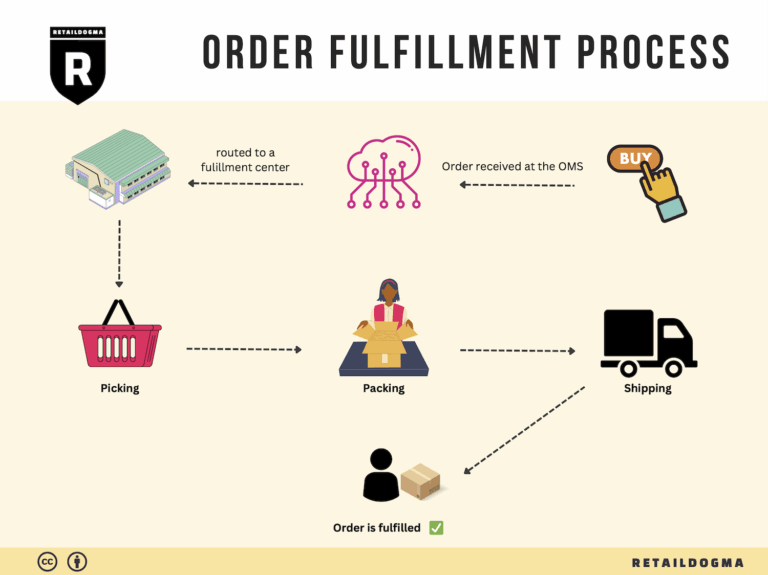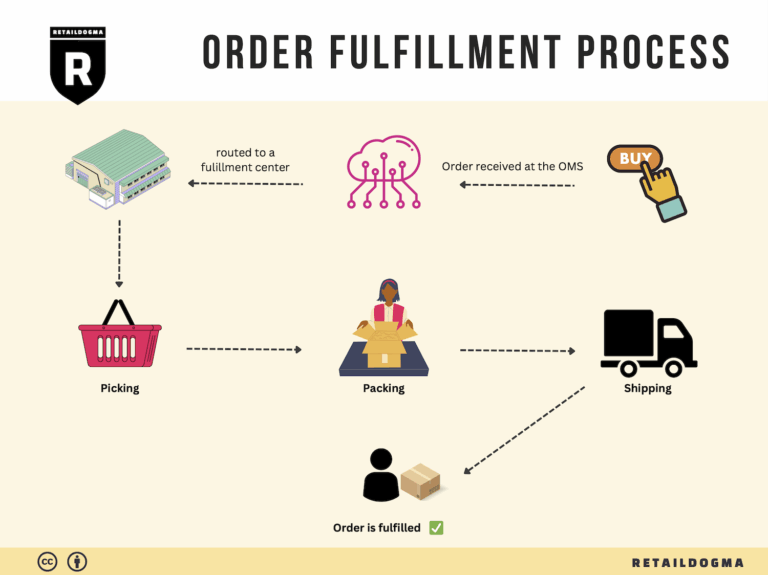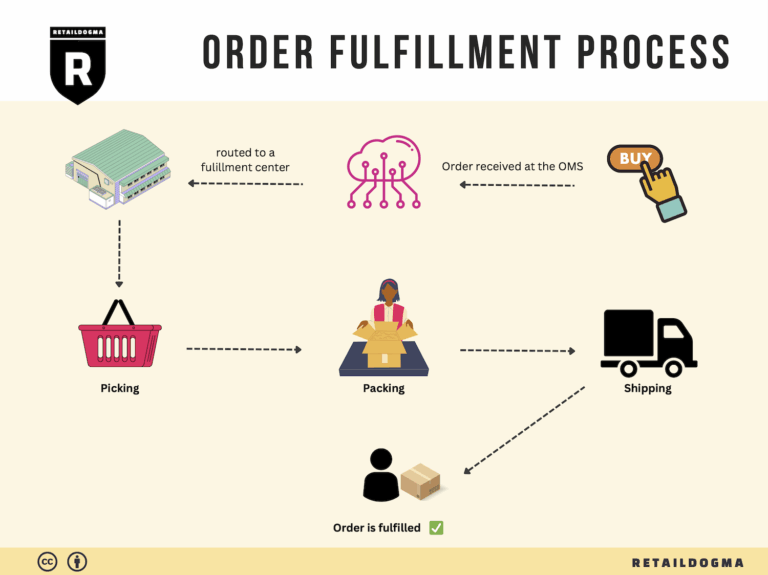Ecommerce Fulfillment Services: The Ultimate Guide (2025)
What is E-commerce Fulfillment? An Introduction for Growing Businesses
Understanding E-commerce Fulfillment
As a growing e-commerce business owner, you may find yourself grappling with the complexities of packing and shipping orders. This overwhelming process can quickly consume your time and resources, diverting your focus from what truly matters: scaling your sales and enhancing your customer experience. E-commerce fulfillment, at its core, is the systematic process of getting a product from your inventory to your customer’s doorstep. It encompasses everything from inventory management and order processing to shipping and returns.
In this guide, we will explore the various fulfillment models available to you, including Third-Party Logistics (3PL) and Fulfillment by Amazon (FBA). Each model has its own set of advantages and challenges, and understanding these differences is crucial for making an informed decision that aligns with your business needs.
We will also cover the core services involved in e-commerce fulfillment. This includes warehousing, inventory management, packing, shipping, and returns processing. Knowing what services are essential for your operations will help you streamline your logistics and improve your overall efficiency.
Choosing the right fulfillment partner can be daunting. Factors such as location, technology, scalability, and cost play a significant role in this decision. This guide will provide you with practical tips on how to evaluate potential partners, ensuring you select one that can support your growth ambitions and adapt to changing market demands.
Pricing is another critical aspect that we will address. Understanding the cost structures of various fulfillment options will empower you to make financially sound decisions. We will break down typical pricing models, including per-order fees, storage costs, and shipping rates, so you can budget effectively.
Our goal with this guide is to empower you, the business owner, to make smart, strategic decisions about your logistics. By demystifying e-commerce fulfillment and providing actionable insights, we aim to equip you with the knowledge you need to optimize your operations and focus on what you do best: growing your business. Whether you’re just starting out or looking to scale, this comprehensive guide will serve as a valuable resource in navigating the complexities of e-commerce fulfillment.
What You’ll Learn In This Guide
- What is E-commerce Fulfillment? An Introduction for Growing Businesses
- The Order Fulfillment Process: From ‘Buy’ Button to Customer’s Door
- Comparing Fulfillment Models: In-House vs. 3PL vs. Dropshipping
- A Deep Dive into Amazon FBA: Pros, Cons, and Who It’s For
- Core Services Offered by Fulfillment Centers
- How to Choose a Fulfillment Partner: A 6-Point Checklist
- Understanding Fulfillment Pricing: A Breakdown of Common Fees
- Frequently Asked Questions (FAQs) about Fulfillment
- Conclusion: Is Outsourcing Fulfillment the Right Move for Your Business?
- Important Disclaimer
The Order Fulfillment Process: From ‘Buy’ Button to Customer’s Door
1. Receiving Inventory
The first step in the order fulfillment process is receiving inventory. When products arrive at the fulfillment center, they undergo a thorough inspection and verification against purchase orders. This ensures that the correct items and quantities have been received, and that they are in good condition. A key term associated with this stage is SKU (Stock Keeping Unit), which is a unique identifier for each product that helps in tracking and managing inventory.
Receiving inventory is crucial because it sets the foundation for accurate stock levels and ensures that products are available for customer orders. Efficient inventory management at this stage can prevent stockouts and overstock situations, both of which can negatively impact sales and customer satisfaction. Streamlined processes, such as automated scanning and digital records, can significantly enhance efficiency during this step.
2. Warehouse Storage
Once the inventory is received and verified, the next step is warehouse storage. Products are organized and stored in designated areas within the fulfillment center based on various factors, such as product size, weight, and demand frequency. This organization often employs a warehouse management system (WMS) to optimize storage locations and improve retrieval efficiency.
Proper warehouse storage is vital for maximizing space utilization and ensuring quick access to items when orders are placed. An organized warehouse reduces the time it takes to locate and retrieve products, ultimately speeding up the overall fulfillment process. Additionally, a well-structured storage system can help minimize damage to products and improve inventory accuracy.
3. Order Picking
Order picking is the process of retrieving items from storage to fulfill customer orders. When an order is placed, the fulfillment center generates a pick list, which details the items and quantities required for that order. Employees or automated systems then navigate the warehouse to collect these items.
This step is critical as it directly impacts order accuracy and fulfillment speed. Efficient picking strategies, such as batch picking (collecting multiple orders at once) or zone picking (assigning specific areas of the warehouse to individual workers), can enhance productivity. By minimizing the time spent on picking, businesses can improve their order turnaround times, leading to higher customer satisfaction.
4. Order Packing
After the items have been picked, they move to the packing stage. During this process, products are carefully packed into boxes or envelopes, often using materials like bubble wrap or packing peanuts to ensure protection during transit. A packing slip is typically included, which provides customers with details about their order.
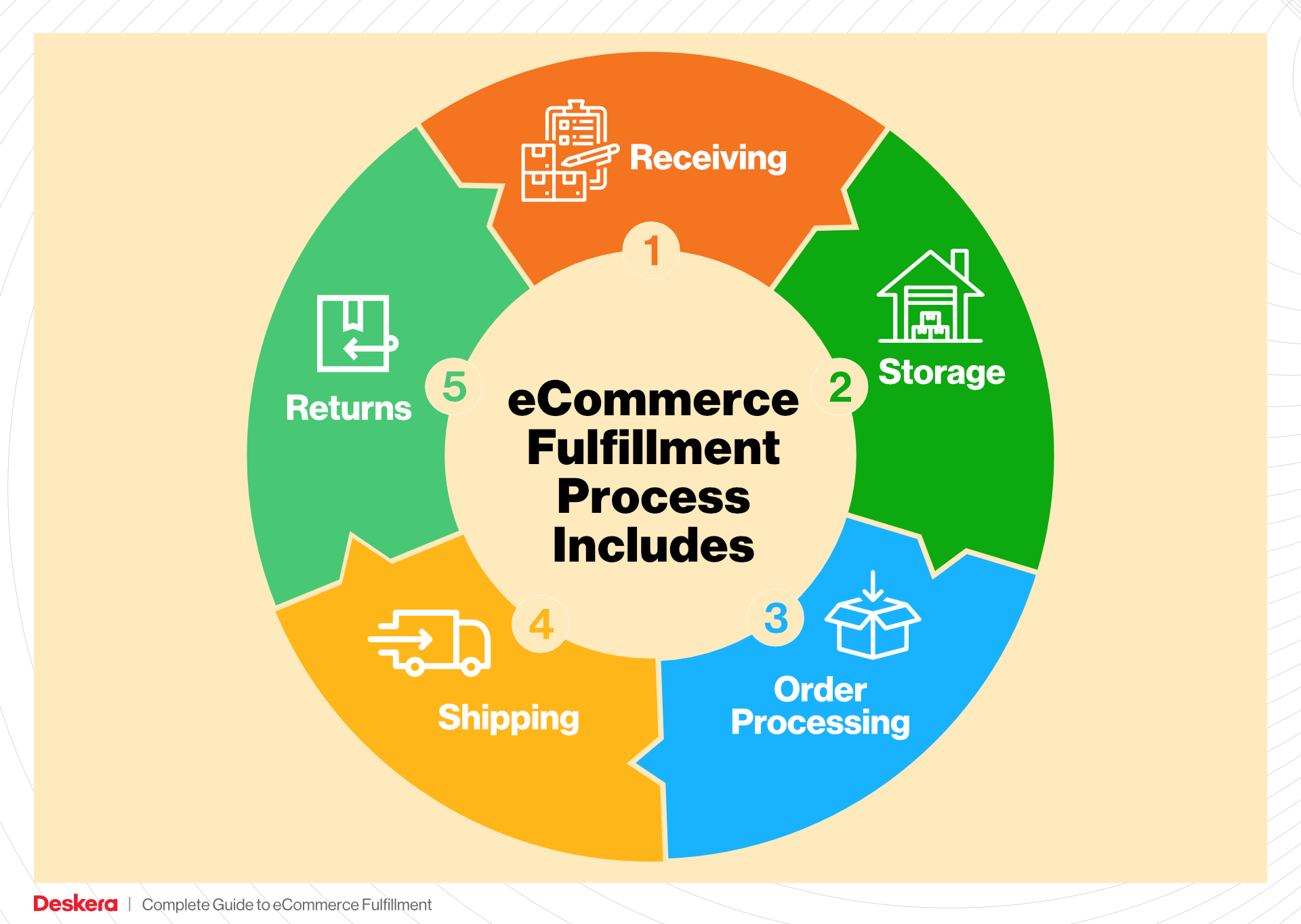
Order packing is essential for preventing damage during shipping and ensuring that the correct items are sent to customers. High-quality packing can also enhance the customer experience, as well-packaged orders reflect a commitment to quality and care. Additionally, efficient packing processes can help optimize shipping costs by reducing the size and weight of packages, which can lead to lower shipping rates.
5. Shipping & Delivery
The final step in the order fulfillment process is shipping and delivery. Once packed, orders are labeled and prepared for shipment. Fulfillment centers often use various carriers to ensure timely delivery to customers, utilizing shipping software to select the best options based on cost and delivery speed. Key terms in this stage include last-mile delivery, which refers to the final leg of the delivery journey to the customer’s door.
Shipping and delivery are critical as they determine the customer’s final experience with the order fulfillment process. Timely and reliable delivery can significantly enhance customer satisfaction and encourage repeat business. To streamline this step, businesses can leverage tracking systems that allow customers to monitor their order status in real-time, providing transparency and reducing inquiries about order whereabouts.
In conclusion, understanding and optimizing each step of the order fulfillment process is essential for e-commerce businesses looking to scale effectively. By focusing on efficiency and accuracy in receiving inventory, warehouse storage, order picking, packing, and shipping, businesses can enhance customer satisfaction, reduce operational costs, and ultimately drive growth.
Comparing Fulfillment Models: In-House vs. 3PL vs. Dropshipping
Fulfillment Model Comparison
| Model | Who Handles Inventory | Best For (Business Stage) | Key Advantage | Key Disadvantage |
|---|---|---|---|---|
| In-House Fulfillment | The business itself | Established businesses | Full control over inventory and operations | High overhead costs and resource demands |
| Third-Party Logistics (3PL) | A third-party provider | Growing businesses | Scalability and reduced operational burden | Less control over inventory and processes |
| Dropshipping | Suppliers or manufacturers | Startups and small businesses | Low upfront investment and risk | Lower profit margins and dependency on suppliers |
In-House Fulfillment
In-house fulfillment involves managing all aspects of storage, inventory management, order processing, and shipping within the business itself. This model is often adopted by established businesses that have the resources to maintain their warehouse and logistics operations. One of the primary advantages of in-house fulfillment is the level of control it provides. Businesses can manage their inventory closely, ensure quality control, and tailor their fulfillment processes to their specific needs and customer preferences. However, this model can come with significant overhead costs, including warehousing, labor, and technology investments. Additionally, the complexity of managing logistics can divert focus from core business activities, particularly for smaller businesses or startups.
Third-Party Logistics (3PL)
Third-party logistics, or 3PL, involves outsourcing fulfillment operations to specialized logistics providers. This model is ideal for growing businesses that want to scale without the burden of managing their own logistics. 3PL providers handle inventory storage, order processing, packing, and shipping, allowing businesses to focus on marketing and sales. A key advantage of using 3PL services is scalability; businesses can easily adjust their logistics operations based on demand fluctuations without the need for significant investments in infrastructure. However, the trade-off is that businesses may have less control over their inventory and processes, which can lead to issues with order accuracy or fulfillment speed if the 3PL partner does not meet expectations.
Dropshipping
Dropshipping is a fulfillment model where the retailer does not keep products in stock. Instead, when a customer places an order, the retailer purchases the item from a third party—usually a wholesaler or manufacturer—who then ships it directly to the customer. This model is particularly attractive for startups and small businesses due to its low upfront investment and minimal risk. Retailers do not need to invest in inventory or warehousing, making it a low-cost entry point into e-commerce. However, dropshipping comes with its own set of challenges. Profit margins can be lower compared to other models, and businesses often face issues related to inventory management, shipping times, and product quality, as they rely heavily on suppliers to fulfill customer orders accurately and promptly.
Conclusion
Each fulfillment model presents unique advantages and challenges, making it essential for e-commerce businesses to evaluate their specific needs, resources, and growth ambitions when deciding which model to adopt. In-house fulfillment offers control but at a higher cost, while 3PL provides scalability and efficiency, albeit with less control. Dropshipping minimizes risk and investment but can lead to lower profit margins and dependency on external suppliers. By understanding these dynamics, business owners can make informed decisions that align with their operational strategies and customer expectations.
A Deep Dive into Amazon FBA: Pros, Cons, and Who It’s For
Understanding Fulfillment by Amazon (FBA)
Fulfillment by Amazon (FBA) is a service provided by Amazon that allows sellers to store their products in Amazon’s fulfillment centers. Amazon takes care of storage, packaging, and shipping of these products, as well as customer service and returns. This service enables sellers to leverage Amazon’s vast logistics network and customer base to enhance their sales potential and operational efficiency.
When a customer places an order for a product that is fulfilled through FBA, Amazon picks, packs, and ships the product directly to the customer. This process is powered by advanced technology and algorithms that optimize inventory management and order processing.
How FBA Works
-
Product Preparation: Sellers prepare their products according to Amazon’s guidelines, including packaging and labeling.
-
Shipping to Fulfillment Centers: Sellers ship their products to one or more of Amazon’s fulfillment centers. In the case of Baltimore, there are multiple fulfillment centers, such as BWI1 and BWI2, strategically located to facilitate fast shipping.
-
Storage: Once received, Amazon stores the products in their warehouses. The products are listed as eligible for Prime and other Amazon services.
-
Order Fulfillment: When a customer orders a product, Amazon handles all aspects of fulfillment—from picking the item off the shelf, packing it securely, and shipping it directly to the customer’s address.
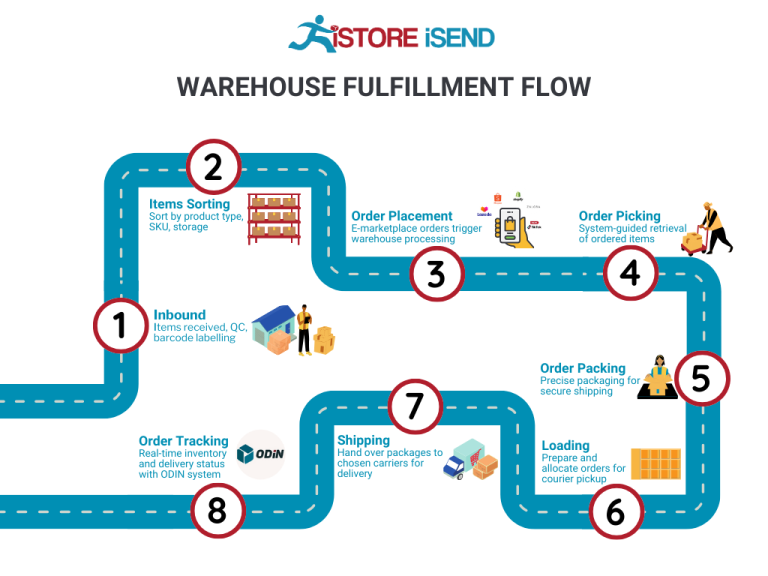
-
Customer Service and Returns: Amazon also manages customer inquiries and returns for FBA products, which can significantly reduce the workload for sellers.
Pros of Using FBA
1. Prime Eligibility
One of the most significant advantages of FBA is that products become eligible for Amazon Prime. This means that Prime members can receive free two-day shipping, which can significantly increase the likelihood of purchase. Prime eligibility adds a level of trust and appeal for customers who value fast and reliable shipping.
2. Customer Trust
Amazon is a recognized and trusted brand. By using FBA, sellers benefit from this trust. Customers are more likely to buy products fulfilled by Amazon due to the perceived quality of service, including reliable shipping and excellent customer support.
3. Multi-Channel Fulfillment
FBA isn’t limited to Amazon’s marketplace. Sellers can utilize FBA for orders from their own websites or other e-commerce platforms. This multi-channel fulfillment capability allows sellers to centralize their logistics and streamline their operations.
4. Scalability
FBA allows sellers to scale their operations without needing to invest heavily in infrastructure. As sales grow, sellers can easily send more inventory to Amazon’s fulfillment centers without worrying about storage or shipping logistics.
5. Time Savings
Outsourcing fulfillment to Amazon saves sellers a considerable amount of time. Sellers can focus on other important aspects of their business, such as product development and marketing, instead of handling logistics.
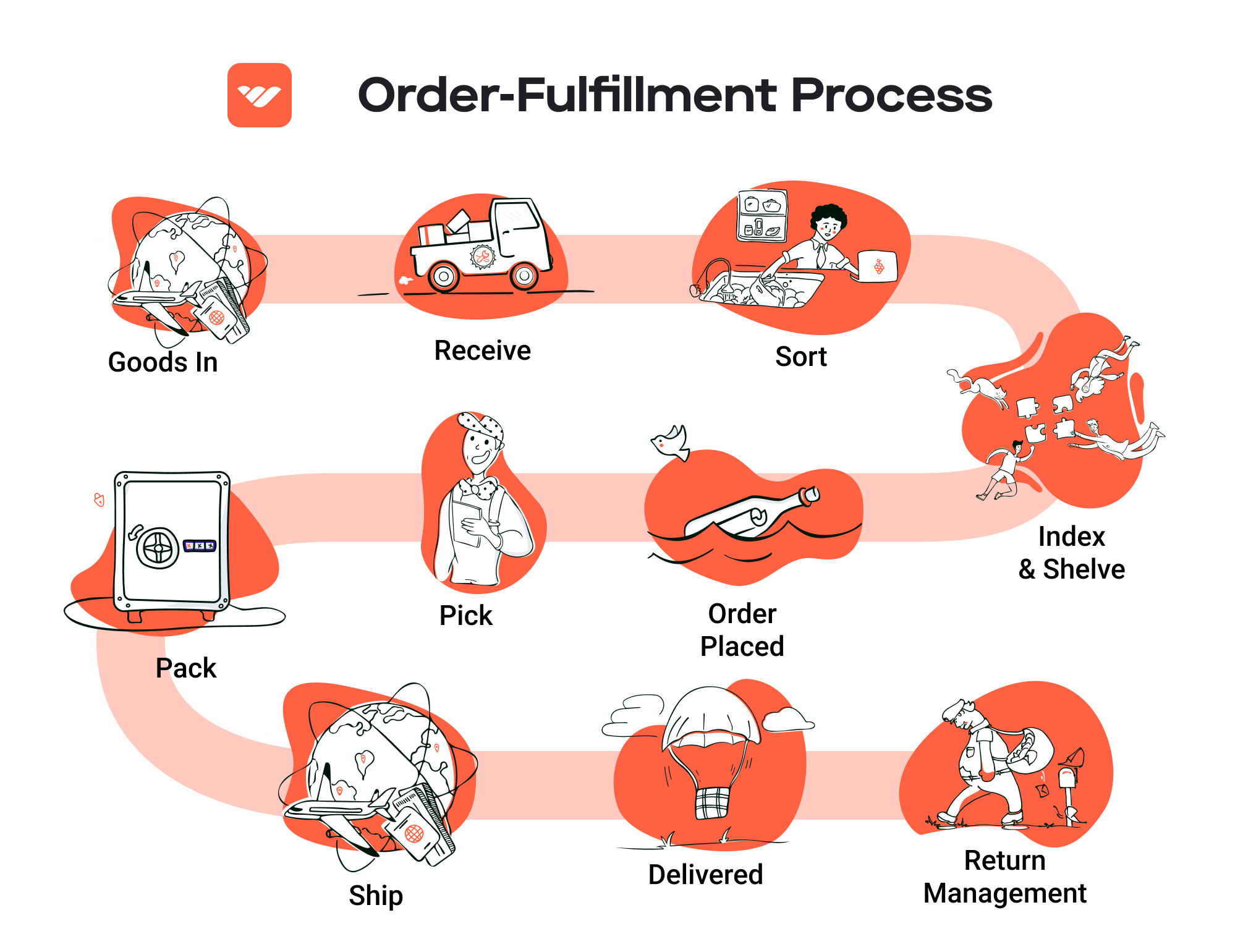
Cons of Using FBA
1. High Fees
While FBA offers convenience, it comes with a cost. Amazon charges storage fees based on the amount of space products occupy and fulfillment fees for each order processed. These costs can add up, particularly for sellers with lower margins or those who do not sell quickly.
2. Strict Inventory Rules
Sellers must adhere to Amazon’s stringent inventory management policies. This includes limitations on the quantity of certain products that can be stored and strict guidelines regarding preparation and packaging. Non-compliance can lead to additional fees or even inventory removal.
3. Commingling Risks
FBA products are often commingled, meaning that inventory from different sellers is stored together. This can pose a risk for sellers, as they may receive returns of products that are not theirs, leading to potential issues with quality control and brand integrity.
4. Loss of Control
When utilizing FBA, sellers relinquish some control over the fulfillment process. They rely on Amazon’s systems and procedures, which can lead to challenges if issues arise, such as shipping delays or inventory mismanagement.
5. Dependence on Amazon
Using FBA can create a dependency on Amazon as the primary sales channel. If policies change or the seller’s account faces restrictions, it can significantly impact their business.
Who is FBA Best For?
Fulfillment by Amazon is particularly advantageous for:
-
Small to Medium-Sized Businesses: Companies looking to scale their operations without the overhead of managing warehousing and logistics can benefit greatly from FBA.
-
E-commerce Entrepreneurs: New sellers entering the e-commerce space can leverage FBA’s infrastructure to gain a foothold in the market without needing to invest heavily in logistics.
-
Brands with Established Products: Businesses with products that have proven demand can utilize FBA to manage fulfillment efficiently and increase sales velocity.
-
Sellers with Limited Time: Entrepreneurs who prefer to focus on marketing, product development, or customer engagement rather than logistics will find FBA a suitable solution.
-
Multi-Channel Sellers: Brands that sell across various platforms can benefit from the streamlined logistics that FBA provides, allowing for a cohesive fulfillment strategy.
In conclusion, while Fulfillment by Amazon offers numerous benefits that can help businesses scale, it is essential for sellers to weigh these against the potential downsides. Understanding how FBA aligns with business goals and operational capabilities is crucial for making an informed decision.
Core Services Offered by Fulfillment Centers
Inventory Management & Warehousing
Fulfillment centers provide comprehensive inventory management and warehousing services that are essential for e-commerce businesses looking to scale effectively. This service includes the storage of products in a controlled environment, ensuring that items are organized and easily accessible. Fulfillment centers utilize advanced inventory management systems that track stock levels in real-time, enabling businesses to maintain optimal inventory levels without the risk of overstocking or stockouts.
The benefits of effective inventory management are manifold. Firstly, it allows businesses to have a clear overview of their stock, facilitating informed decision-making regarding reordering and product launches. Secondly, it can significantly reduce carrying costs associated with excess inventory, freeing up capital for other operational needs. Lastly, streamlined warehousing operations enhance order fulfillment speed, leading to improved customer satisfaction—a crucial factor in the competitive e-commerce landscape.
Pick and Pack Services
Pick and pack services are a cornerstone of the fulfillment process, where products are picked from the warehouse shelves and packed for shipping. Fulfillment centers employ efficient systems and trained staff to ensure that the correct items are selected, packaged securely, and labeled appropriately for delivery. This process typically involves scanning items to confirm accuracy and using specialized packing materials to protect products during transit.
The primary benefit of pick and pack services is the enhancement of order accuracy and efficiency. For e-commerce businesses, errors in order fulfillment can lead to increased returns and customer dissatisfaction. By outsourcing this function to fulfillment centers, businesses can leverage their expertise and technology to reduce mistakes. Additionally, the speed at which orders are processed can significantly impact overall sales; faster shipping times lead to higher customer retention and repeat purchases.
Kitting and Assembly
Kitting and assembly services offered by fulfillment centers involve combining individual items into ready-to-ship sets or kits. This service is particularly beneficial for businesses that sell products that are often purchased together, such as gift sets, subscription boxes, or promotional bundles. Fulfillment centers can handle the assembly of these kits, ensuring they are packaged attractively and ready for distribution.
The advantage of kitting and assembly lies in its ability to streamline operations and enhance customer appeal. By offering bundled products, businesses can increase their average order value and create a more compelling shopping experience for customers. Furthermore, fulfillment centers can help manage the complexities of assembly, allowing businesses to focus on marketing and sales rather than logistical challenges. This service can also lead to reduced shipping costs since multiple items can be shipped together as a single package.
Returns Management (Reverse Logistics)
Returns management, or reverse logistics, is a critical service provided by fulfillment centers that helps e-commerce businesses handle product returns efficiently. This process includes receiving returned items, inspecting them for quality, restocking them if they are in sellable condition, and processing refunds or exchanges. Fulfillment centers often have dedicated teams to manage returns, utilizing systems that track return rates and reasons for returns.
The benefits of effective returns management are significant. First, it enhances the customer experience by providing a seamless returns process, which can be a deciding factor for consumers when choosing where to shop. A well-handled return process can turn a potentially negative experience into a positive one, fostering customer loyalty. Additionally, effective returns management can provide valuable insights into product performance and customer preferences, enabling businesses to make data-driven decisions regarding inventory and product offerings.
In summary, utilizing the core services offered by fulfillment centers—inventory management and warehousing, pick and pack services, kitting and assembly, and returns management—can greatly enhance operational efficiency for e-commerce businesses. By outsourcing these functions, businesses can focus on their core competencies, improve customer satisfaction, and ultimately scale their operations more effectively.
How to Choose a Fulfillment Partner: A 6-Point Checklist
Location & Warehouse Network
Importance:
The geographical location of your fulfillment partner is critical for efficient shipping and delivery. Proximity to your customer base can significantly reduce shipping times and costs, improving customer satisfaction and retention. For e-commerce businesses, especially those using platforms like Amazon, having fulfillment centers located near major metropolitan areas is a key advantage.
Questions to Ask:
– Where are your warehouses located, and how do they align with our target market?
– Can you provide insights into your distribution network and how it supports timely deliveries?
– Do you have multiple warehouse locations, and can you fulfill orders from different sites based on customer location?
Technology & Integrations
Importance:
The technology used by your fulfillment partner plays a vital role in streamlining operations. An advanced Warehouse Management System (WMS) can enhance inventory tracking, order processing, and shipping accuracy. Additionally, seamless integration with your e-commerce platform (like Shopify or Amazon) is essential for real-time data exchange.
Questions to Ask:
– What technology platforms do you use for inventory management, order processing, and shipping?
– How do you handle integrations with major e-commerce platforms, and what is the implementation process?
– Can you provide real-time tracking information for orders, and how is this communicated to customers?
Specializations (e.g., Cold Storage, Oversized Items)
Importance:
Not all fulfillment centers are equipped to handle every type of product. If your business sells specialty items like perishable goods or oversized products, you need a partner with the right facilities and expertise. Choosing a partner with the necessary specializations can prevent logistical challenges and ensure compliance with relevant regulations.
Questions to Ask:
– Do you have experience handling our specific product categories, such as cold storage for perishables or oversized items?
– What measures do you have in place to ensure product safety and compliance with industry standards?
– Can you provide examples of how you have successfully fulfilled orders for similar products in the past?
Scalability & Capacity
Importance:
As your business grows, your fulfillment needs will evolve. A good fulfillment partner should be able to scale operations to accommodate increased order volumes without compromising service quality. Understanding their capacity for growth and flexibility in operations is crucial for long-term success.
Questions to Ask:
– What is your current capacity for order fulfillment, and how do you plan to scale as demand increases?
– How do you manage peak seasons or unexpected spikes in order volume?
– Can you accommodate seasonal inventory fluctuations, and what processes do you have in place to manage this?
Pricing and Contracts
Importance:
Understanding the pricing structure and contract terms is essential to ensure that you are not overpaying for services and that you have the flexibility to adapt as your business changes. Look for transparency in pricing and clarity in contract terms to avoid unexpected costs.
Questions to Ask:
– Can you provide a detailed breakdown of your pricing model, including any additional fees for services such as storage, packaging, and shipping?
– What are the terms of the contract, and are there any penalties for early termination or changes in order volume?
– Are there options for volume discounts or long-term contracts that could benefit our business?
Customer Support & Reviews
Importance:
Exceptional customer support is vital when issues arise in the fulfillment process. A responsive and reliable support team can help resolve problems quickly, ensuring minimal disruption to your operations. Additionally, researching reviews from other clients can provide insights into the partner’s reliability and service quality.
Questions to Ask:
– What customer support options do you offer (e.g., phone, email, chat), and what are your response times?
– Can you provide references or case studies from current clients in our industry?
– How do you handle customer complaints or issues with order fulfillment, and what is your escalation process?
Conclusion
Choosing the right fulfillment partner is a critical decision that can significantly impact your e-commerce business’s success. By using this checklist to evaluate potential partners, you can ensure that you select a fulfillment center that aligns with your business needs, supports growth, and enhances customer satisfaction. Remember, the goal is to find a partner that not only meets your current requirements but can also adapt to your future needs as your business scales.
Understanding Fulfillment Pricing: A Breakdown of Common Fees
Initial Setup Fees
When engaging with a fulfillment center, businesses often encounter initial setup fees. These fees cover the cost of onboarding your products into the system, which may include creating product listings, setting up inventory management, and configuring storage locations.
The calculation of initial setup fees can vary widely based on the complexity of your inventory. For instance, if your products require special handling or unique packaging, these factors can lead to higher costs. Additionally, some fulfillment centers may offer tiered pricing based on the number of SKUs (Stock Keeping Units) or the total volume of products being set up. It’s essential to clarify what is included in the setup process to avoid unexpected charges.
Receiving Fees
Receiving fees are charged when your products arrive at the fulfillment center. These fees cover the labor and resources needed to unload, inspect, and catalog your goods into the warehouse system.
Typically, receiving fees are calculated based on the volume of products received, often measured in weight or the number of pallets. For example, you might encounter fees like $30 per pallet or a flat fee of $0.10 per unit. It’s important to consider how your products are shipped; bulk shipments may incur lower per-unit costs compared to smaller, individual shipments.
Storage Fees (per pallet/bin)
Storage fees are a recurring expense associated with keeping your inventory in the fulfillment center. These fees can be charged monthly or annually and are generally calculated per pallet or bin used.
Many fulfillment centers offer a tiered pricing model based on the total amount of space your products occupy. For example, you might pay $20 per pallet per month for the first 10 pallets, with a reduced rate for any additional pallets. Additionally, some centers may impose long-term storage fees if products remain unsold for an extended period, typically over six months. Understanding your inventory turnover rates can help you manage these costs effectively.
Pick & Pack Fees (per item/order)
Pick and pack fees apply when orders are processed. This fee covers the labor involved in selecting items from storage, packing them appropriately, and preparing them for shipment.
Pick and pack fees are often structured as a per-item or per-order charge. For example, you may see a fee of $1.00 per item picked and packed, or a flat fee of $3.00 per order, regardless of the number of items. The more complex your order fulfillment needs—such as customized packaging or special instructions—the higher the fees may be. It’s advisable to discuss your specific requirements with your fulfillment provider to get a clear understanding of potential costs.
Shipping Fees
Shipping fees are one of the most significant expenses in the fulfillment process and can vary widely based on several factors, including the shipping method, destination, and package dimensions.
Fulfillment centers typically charge shipping fees based on carrier rates, which can fluctuate depending on the volume of packages shipped and negotiated contracts with shipping providers. Costs may also differ based on whether you opt for standard, expedited, or same-day delivery. Businesses should consider whether they wish to pass these costs onto customers or absorb them as part of their pricing strategy.
Tips for Getting an Accurate Quote
-
Provide Detailed Information: When requesting a quote, be as detailed as possible about your product types, volumes, and specific needs. This includes dimensions, weight, and any special handling requirements.
-
Ask About Hidden Fees: Inquire about any additional fees that may not be included in the initial quote, such as long-term storage, returns processing, or additional packaging services.
-
Compare Multiple Providers: Don’t settle for the first quote. Obtain quotes from several fulfillment centers to compare services, pricing, and terms. This will help you identify the best value for your specific needs.
-
Review Contract Terms: Carefully read through the service agreement or contract to understand all terms, including any clauses related to fee adjustments based on volume changes or service level agreements.
-
Negotiate: Depending on your projected volume, you may have room to negotiate better rates or terms. Be open about your expectations and see if the provider can offer any flexibility.
By understanding these common fulfillment pricing models and taking steps to secure an accurate quote, e-commerce businesses can better manage their logistics costs and enhance their operational efficiency as they scale.
Frequently Asked Questions (FAQs) about Fulfillment
1. What is an Amazon Fulfillment Center?
An Amazon Fulfillment Center is a large warehouse where Amazon stores products sold by third-party sellers and itself. The center handles the packing, shipping, and returns of these products, ensuring that orders are processed efficiently and delivered promptly to customers.
2. What locations are available for Amazon Fulfillment Centers in Baltimore, MD?
In Baltimore, there are two main Amazon Fulfillment Centers located at:
– BWI1: 2010 Broening Hwy, Baltimore, MD 21224
– BWI2: 5501 Holabird Avenue, Baltimore, MD 21224
Additionally, there is another facility known as DMD5 at 2100 Van Deman St, Baltimore, MD 21224.
3. What is the difference between a warehouse and a fulfillment center?
While both warehouses and fulfillment centers store products, their primary functions differ. A warehouse is mainly used for storage, often holding inventory for longer periods. In contrast, a fulfillment center focuses on order processing and shipping, with a streamlined operation to quickly handle incoming orders and deliver them to customers.
4. How does Amazon Fulfillment work for sellers?
Sellers using Amazon Fulfillment (FBA – Fulfillment by Amazon) send their products to Amazon’s fulfillment centers. When a customer orders a product, Amazon picks, packs, and ships it on behalf of the seller. This service also includes customer service and returns handling, allowing sellers to focus on other aspects of their business.
5. What is a 3PL and how does it relate to Amazon Fulfillment?
A 3PL, or Third-Party Logistics provider, is a company that manages logistics operations for businesses, including warehousing, fulfillment, and shipping. Many sellers use 3PL services alongside Amazon Fulfillment to diversify their logistics strategy, especially for products that are not sold on Amazon or for managing inventory outside of Amazon’s system.
6. How much do fulfillment services cost?
The cost of fulfillment services can vary based on several factors, including storage fees, pick and pack fees, and shipping costs. Generally, Amazon charges sellers based on the size and weight of the products stored and shipped. It is advisable for sellers to review Amazon’s fee structure to understand potential costs fully.
7. What are the benefits of using Amazon Fulfillment Centers?
Using Amazon Fulfillment Centers provides several advantages, including:
– Faster shipping: Leveraging Amazon’s logistics network can lead to quicker delivery times.
– Prime eligibility: Products fulfilled by Amazon are eligible for Amazon Prime, attracting more customers.
– Scalability: Sellers can easily scale their operations without the need for additional warehousing or staffing.
8. How do I send my products to an Amazon Fulfillment Center?
To send products to an Amazon Fulfillment Center, sellers must first create a shipping plan in their Seller Central account. This plan outlines the products being sent, the quantities, and the selected fulfillment center. Once the plan is confirmed, sellers can prepare their shipments according to Amazon’s guidelines and send them to the specified address.
9. What are the requirements for inventory stored at Amazon Fulfillment Centers?
Products sent to Amazon Fulfillment Centers must meet specific requirements, including packaging and labeling standards. Additionally, items must comply with Amazon’s product guidelines, which may vary by category. Sellers should familiarize themselves with these requirements to avoid delays in processing.
10. What should I know about returns when using Amazon Fulfillment?
When using Amazon Fulfillment, Amazon handles returns on behalf of sellers. Customers can return items within 30 days of delivery for a full refund, provided the products are new and unopened. Sellers are responsible for understanding Amazon’s return policies, as they can affect overall sales performance and inventory management.
Conclusion: Is Outsourcing Fulfillment the Right Move for Your Business?
Evaluating the Outsourcing Fulfillment Strategy
Outsourcing fulfillment can be a game-changing decision for e-commerce businesses aiming to scale efficiently. By partnering with a fulfillment service, such as those offered at Amazon Fulfillment Centers in Baltimore, businesses can unlock several significant advantages.
First and foremost, utilizing a fulfillment partner saves valuable time. Handling logistics in-house can be time-consuming and distracting, diverting focus from core business activities like marketing and product development. A dedicated fulfillment center allows businesses to streamline order processing, inventory management, and shipping, freeing up resources to drive growth and innovation.
Scalability is another crucial benefit. As demand fluctuates, fulfillment partners can quickly adapt to changing volumes, ensuring that businesses can meet customer needs without the hassle of maintaining excess inventory or investing in additional storage space. This flexibility is vital for navigating peak seasons or unexpected sales surges, allowing businesses to scale operations seamlessly.
Moreover, fulfillment services bring a wealth of expertise to the table. Experienced providers understand the complexities of logistics, shipping regulations, and inventory management. They leverage advanced technology and systems to optimize fulfillment processes, ensuring faster delivery times and improved customer satisfaction.
However, the success of outsourcing fulfillment hinges on selecting the right partner. Businesses should conduct thorough research, evaluating potential fulfillment providers based on their technology, reliability, customer service, and scalability options. The right partner can facilitate growth, while a poor choice may hinder progress.
To determine if outsourcing fulfillment is the right move for your business, consider auditing your current shipping and logistics processes. Assess your efficiency, costs, and capacity for growth. This evaluation can provide clarity on whether a fulfillment partner is the strategic next step in your e-commerce journey.
Important Disclaimer
⚠️ Important Disclaimer
The information in this guide is for educational purposes. Fulfillment services, pricing, and platform features change frequently. Always conduct your own due diligence and consult with providers directly before making business decisions.
